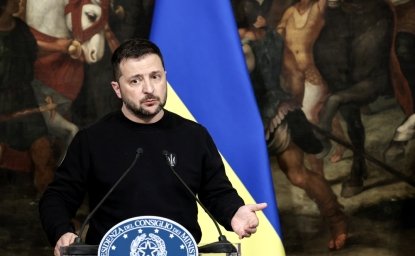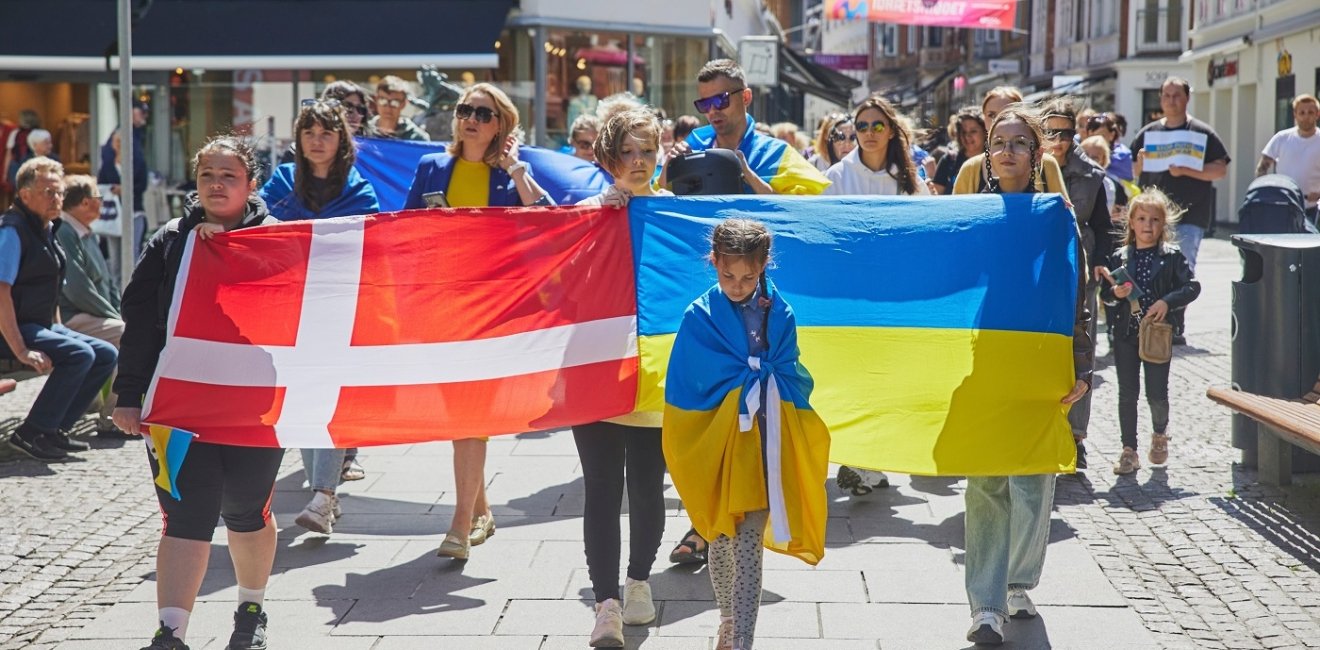
A blog of the Kennan Institute
Ukraine’s government presented its National Recovery Plan in July 2022, when the vast part of southern and eastern Ukraine was still occupied. The plan proposed that certain European countries, the United States, and Canada each take charge of one region’s recovery. Though Denmark was not on the list of suggested countries to provide patronage, it was moved to action after Zelensky addressed the Danish parliament on March 29, 2022, when Russia’s brutal attacks on Mykolaiv were fresh news. Denmark’s early lead provides a model for future restoration efforts by other countries working with Ukraine.
Mykolaiv a Key City
Mykolaiv, a prominent shipbuilding center of the Russian Empire and later the Soviet Union, was one of the key Ukrainian cities that Russia had its eyes on after the start of the full-scale invasion.
In 2022, Russian forces tried to take over Mykolaiv many times, using occupied Kherson as a base for attacks. There followed months of bombings, air strikes, and assaults by ground forces on fighters and noncombatants alike in Mykolaiv center. In April 2022, Russian forces cut off the water supply to Mykolaiv. The air strikes destroyed substantial civilian infrastructure, including hospitals, schools, railyards, and residences. However, the Ukrainian army managed to resist, and the city remained in Ukrainian control. After the Ukrainian army liberated Kherson on November 11, 2022, the situation in Mykolayiv started to improve.
Denmark became one of the countries most active in helping restore facilities and providing specific assistance to many Ukrainian partners. Mykolaiv and the entire region became exemplars of recovery, at least in the eyes of the public, with the help of Denmark.
Denmark’s Assistance to Mykolaiv
Denmark’s assistance to Mykolaiv is quite transparent. Notably, Denmark has provided Mykolaiv local authorities with no direct financial assistance. That has helped the Denmark-Mykolaiv partnership become a model for other countries in assisting Ukraine.
According to the Danish ambassador to Ukraine, Ole Egberg Mikkelsen, approximately 60 percent of Danish aid sent to Ukraine is directed to Mykolaiv city and region. Mykolaiv city mayor, Oleksandr Senkevich, explained that Denmark’s support includes technical assistance.
Another notable feature of the arrangement is that Denmark is addressing specific, contemporaneous needs of Mykolaiv city and region. For example, late summer and early fall saw wildfires occurring spontaneously because of the high temperatures. In late September the Danish embassy in Ukraine issued a statement on the delivery of rapid-action pumping equipment to help suppress the fires quickly.
Since April 2022, drinking water has remained a significant problem for Mykolaiv citizens as Russia has bombarded the irrigation system. Denmark has helped the local authorities set up more than sixty water pumps to ensure the city’s water purification system remains in operation.
Fresh Russian attacks on Ukraine’s energy facilities are expected during the coming winter. In advance of that threat, Denmark in coordination with UNDP Ukraine has provided more than 182 generators to support government, law enforcement, schools, and medical and social agencies in Mykolaiv region when other energy infrastructure is lost.
The provision of such aid follows one of many available templates but is perhaps most gratifying to Ukrainians as it demonstrates real help and eliminates the risk of corruption around foreign aid.
A Boost to Mykolaiv’s Shipbuilding Industry
The framework of cooperation between Ukraine and Denmark includes restoring Mykolaiv’s shipbuilding industry. The operational readiness of at least two of three local shipbuilding yards, a state-owned yard and the private “Ocean” yard, has declined sharply during the war. A December 18, 2021, memorandum of understanding signed by the two countries outlines a joint shipbuilding project whereby all construction would be done in Ukraine using Ukrainian sourced materials to the extent possible, with Denmark providing vessel designs.
Both military and civilian uses are anticipated for the ships. As Ukraine’s Minister of Infrastructure Oleksandr Kubrakov pointed out, the arrangement would take advantage of Ukraine’s existing port infrastructure and its access to major rivers. Moreover, a water transport industry would nicely complement Ukraine’s strong agricultural sector.
Russia’s war in Ukraine and the altered security situation in Europe have prompted Denmark to strengthen its own maritime defenses. A public-private partnership is envisioned that would focus on increasing warship-building skills and strengthen procurement chains, in addition to renewing and enlarging Denmark’s fleet.
Reestablishing Mykolaiv as a Business Center
Denmark plans to open an embassy office in Mykolaiv in October 2023, the first country to do so. As Danish Minister of Foreign Affairs Lars Løkke Rasmussen emphasized in an early October announcement, the reconstruction of Ukraine cannot wait for the war to end. Denmark expects to work closely with local and regional authorities, providing know-how in identified areas such as water, energy, and waste management.
The Danish Refugee Council has also opened an office in Mykolaiv. The DRC is providing water treatment plants and basic building materials to help support a citizenry exhausted by war and shorn of financial resources.
Denmark’s as well as other Western partners’ support remains crucial for the community of Mykolaiv and other cities in the region. Mykolaiv city lacks national and local investment, and until the war ends, this situation will not improve.
Another confounding factor is that the Ukrainian government appears poised to redirect tax revenues originally designated for local communities to the central budget for the last quarter of 2023 and all of 2024. In 2022–2023 the Mykolaiv city budget received 46 percent of its input from those now reassigned tax revenues. This situation will likely force Mykolaiv and other cities to seek more specific partnerships with foreign countries and cities to get assistance in covering basic needs.
Mykolaiv and its community have a remarkable experience in cooperating with Denmark. Denmark’s approach of working with local and regional authorities both to remediate specific, immediate problems and, in the longer term, to develop modern industries provides a model that could be replicated by other countries as they take up the challenge of Ukraine’s National Recovery Plan.
The opinions expressed in this article are those solely of the author and do not reflect the views of the Kennan Institute.
Author


Kennan Institute
The Kennan Institute is the premier US center for advanced research on Eurasia and the oldest and largest regional program at the Woodrow Wilson International Center for Scholars. The Kennan Institute is committed to improving American understanding of Russia, Ukraine, Central Asia, the South Caucasus, and the surrounding region though research and exchange. Read more

Explore More in Focus Ukraine
Browse Focus Ukraine
Building a Thriving Ukrainian Design Community Now

Ukraine Seeks to End the War. What's Wrong With the “Peace Scenarios”?


